Newsletter – June 2021
Spotlight on… good complaint handling
At the Legal Ombudsman we’re always pleased to see that we don’t receive many complaints about Costs Lawyers. However, as 14% of the initial complaints we receive are about costs, it is clearly a key driver for customer complaints. Therefore, it is important to ensure procedures are in place to deal with any potential complaints that may arise.
Over the last year, we’ve had the opportunity to spend some time with lawyers and it has given us invaluable insight into some common issues, which we feel are creating barriers to resolving first tier complaints.
A recent audit by the CLSB of Costs Lawyer’s complaints procedures revealed that some are not up to standard, and our experience would support this. In every complaint procedure we reviewed during our interactions with lawyers we found something that wasn’t quite right. We found issues with timescales, incorrect information about escalating complaints and lengthy complaint procedures that would take longer than the eight weeks allotted to resolve a complaint.
So, it’s not only important to provide a reasonable service but also to provide reasonable complaint handling as part of your service offering if/when needed.
So how can you improve your complaint handling?
Well, our experience shows that having transparent, accessible, and clear procedures and processes in place can really help. Not only to meet your regulatory requirements, but also to increase customer confidence in your service. It shows you are committed to providing a good level of service and will mean you are ready if/when a complaint is made.
The CLSB’s recent publication of a model complaints procedure is a useful template for how customers can complain and the information you need to include. Behind this, should sit an easy to follow complaints process which supports a smooth, accessible, and timely complaint journey.
Our updated Best Practice Complaint Handling Guide can help you to improve your internal complaints process, prevent complaints coming to the Legal Ombudsman or ensure that your decisions are in line with any the Ombudsman would recommend.
Our guide covers areas of compliance and steps which we consider are a best practice approach to good complaint handling.
The guide sets out the important time limits that you must follow to be compliant with your complaints handling responsibilities, considerations to make, how to respond and what to consider if you feel a remedy is appropriate.
When it comes to fees, one of the common areas of complaint is the final invoice. If you are deciding whether the service was reasonable ask yourself: “Have I managed their expectations in this area? Have I made it clear that the costs could increase?” It is okay not to know all the costs from the start of the instruction, though you should be able to provide a reasonable estimate based on the information available at the time, and it is okay to increase estimates because work has expanded. The key is whether this has been explained to the customer and whether their expectations have been managed. These are the types of questions we ask when we investigate a complaint.
Included throughout the Best Practice Complaint Handling Guide are case studies and useful links to more detailed guidance which will help you to check and refresh your process.
Sharing learning with the profession is an important business priority for us and we are committed to developing our learning resources pages on an ongoing basis. We will continue to add more depth from our case work, data, research and customer feedback to make these pages a useful resource for service providers.
We are keen to hear from you if there are areas you want us to focus on, so please get in touch at [email protected].
Steve Pearson, Deputy Chief Ombudsman, Legal Ombudsman
